MSI's Computex 2024 booth was packed with wonderful and weird hardware, and even more packed with people eager to see it all
Graphics cards, monitors, SSDs, and next gen motherboards galore. With a healthy dose of AI for good measure.
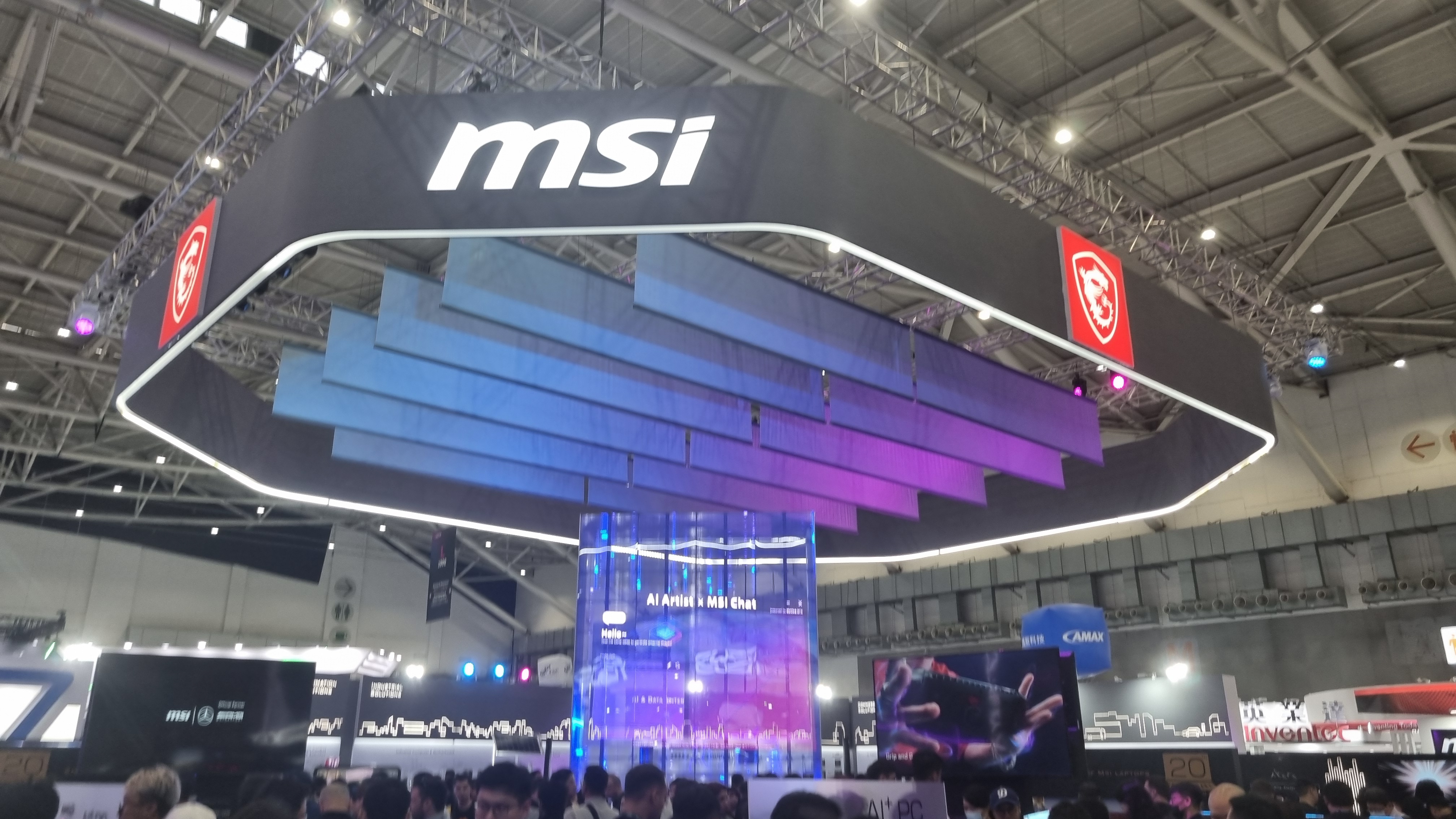
After a couple of quiet years following the pandemic, this year's Computex was back with a vengeance. Of all the times I have visited Computex, I have never seen so many people crammed into the Nangang Exhibition Center, and MSI's booth was a perfect illustration of this post-COVID rebound. It wasn't just packed with exciting new hardware, it was absolutely overflowing with people too!
We visited MSI's booth on the same day three VIPs and their entourages were due to visit Nangang. Nvidia CEO Jensen Huang was surrounded by a crowd that seemed to be 20 deep. AMD CEO Dr Lisa Su's throng was only slightly smaller, but the biggest VIP was the recently elected President of Taiwan himself, William Lai, and given the obvious security concerns surrounding him, it threw the entire show floor into a state of semi-panicky chaos.
It just so happened that Jensen came by the MSI booth just before we visited, and with his entourage, dozens of journos and what seemed like hundreds of MSI employees, it was not a good place to be for the enochlophobic!
But, that's Computex for you, and we love it.
Back to the show! The component section of MSI's booth contained many of the things we have come to expect from a Computex showcase. There were lots of monitors, motherboards, graphics cards, and SSDs. Of course, AI was everywhere—as it was across the entire show—but this year MSI exhibited some really interesting innovations. Some of these will certainly reach retail, while others were more in the proof-of-concept stage. Nevertheless, it gave us an idea of what the future of the PC could look like, and it's an exciting and intriguing future at that.
It's memory Jim, but not as we know it
MSI showed off two particularly interesting products: CAMM2 memory and its expanding Project Zero backside-connector ecosystem. If both see widespread adoption, they will represent the biggest fundamental changes to the ATX PC in many years.
I'll begin with CAMM2 memory. It's distinct from LPCAMM2 which will almost certainly replace SO-DIMMs in laptops. CAMM2's benefits include higher speeds thanks to shorter motherboard trace lengths, and better reliability due to it effectively combining two DIMMs as we know them into one module. It's even possible to replace the socket, or at least part of it. Have you ever suffered the loss of a motherboard due to bent CPU pins? This problem will be alleviated, if not solved in the case of CAMM2 memory.
The biggest gaming news, reviews and hardware deals
Keep up to date with the most important stories and the best deals, as picked by the PC Gamer team.
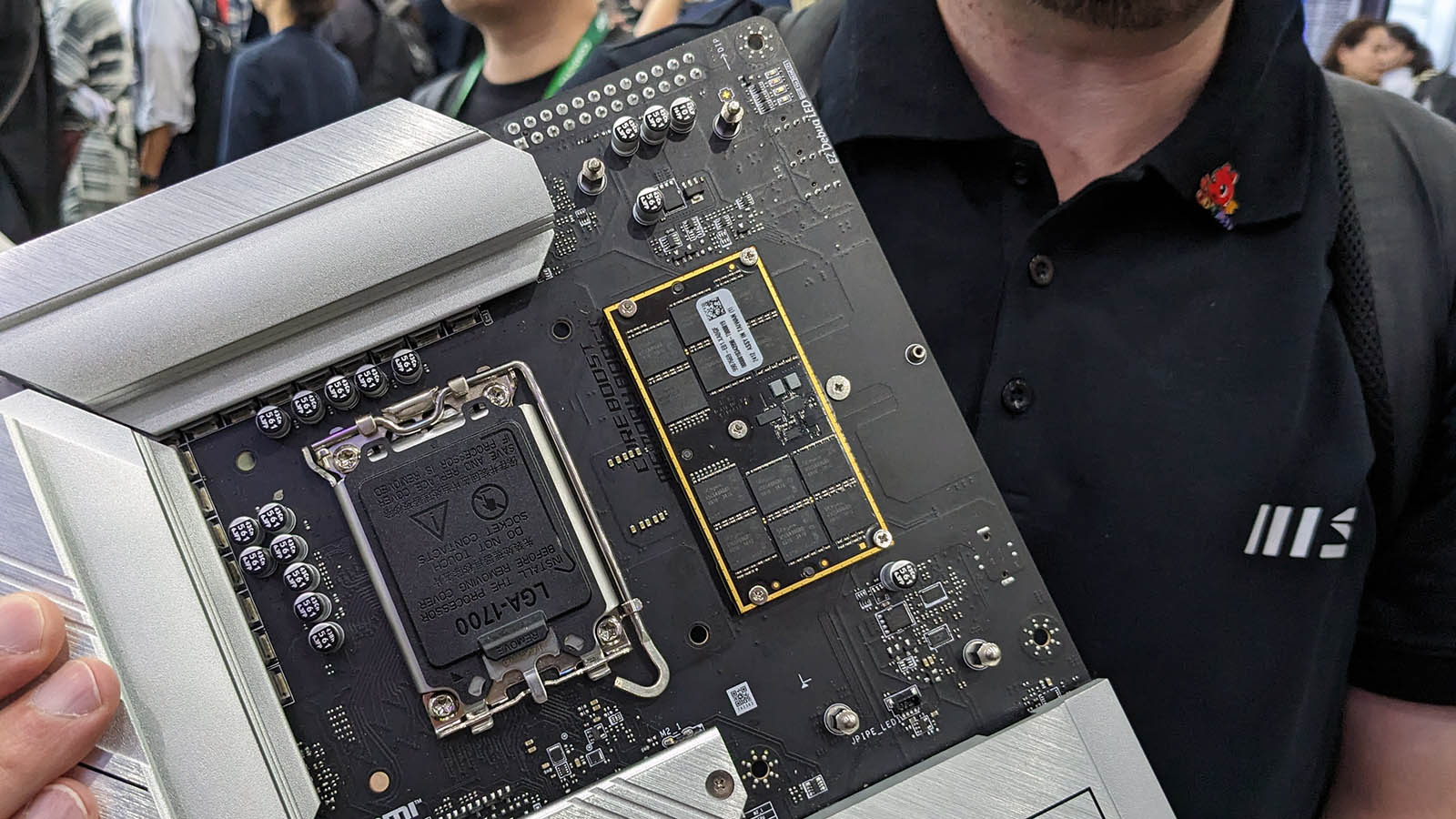
Will MSI and other motherboard vendors push the CAMM2 standard? The signs were there, as other motherboard vendors had CAMM2 prototypes as well. Additionally, the likes of Kingston, Teamgroup, G.Skill, SK Hynix and Micron have all invested into the form factor. Performance aside, desktop CAMM2 memory will give motherboard vendors more PCB area to include more M.2 slots, or give them an opportunity to place things like heatsinks with branding, ARGB or even small screens.
MSI believes CAMM2 memory will come to market, making this an intriguing glimpse at the possible future of desktop memory.
MSI demonstrated CAMM2 on a Z790 Project Zero motherboard. I covered a B650 version of this backside-connector ecosystem, and I love it. A couple of case manufacturers I spoke to indicated they will introduce backside connector support across their entire ranges, and I hope it becomes a standard part of future generation PCs. Along with CAMM2, a gaming PC in a couple of years from now could look quite a bit different.
CAMM2 wasn't the only memory form factor demonstrated by MSI. It showed off something it called the Mini_CUDIMM. It's a placeholder name for something MSI and Intel are working on. There weren't many details, but MSI says this form factor could lead to even faster memory, with lower latency. Physically, the slots look much like SO-DIMM slots. Interestingly, the system supports LGA 1700 processors, meaning Mini_CUDIMM isn't all that different from the currently available DDR5.
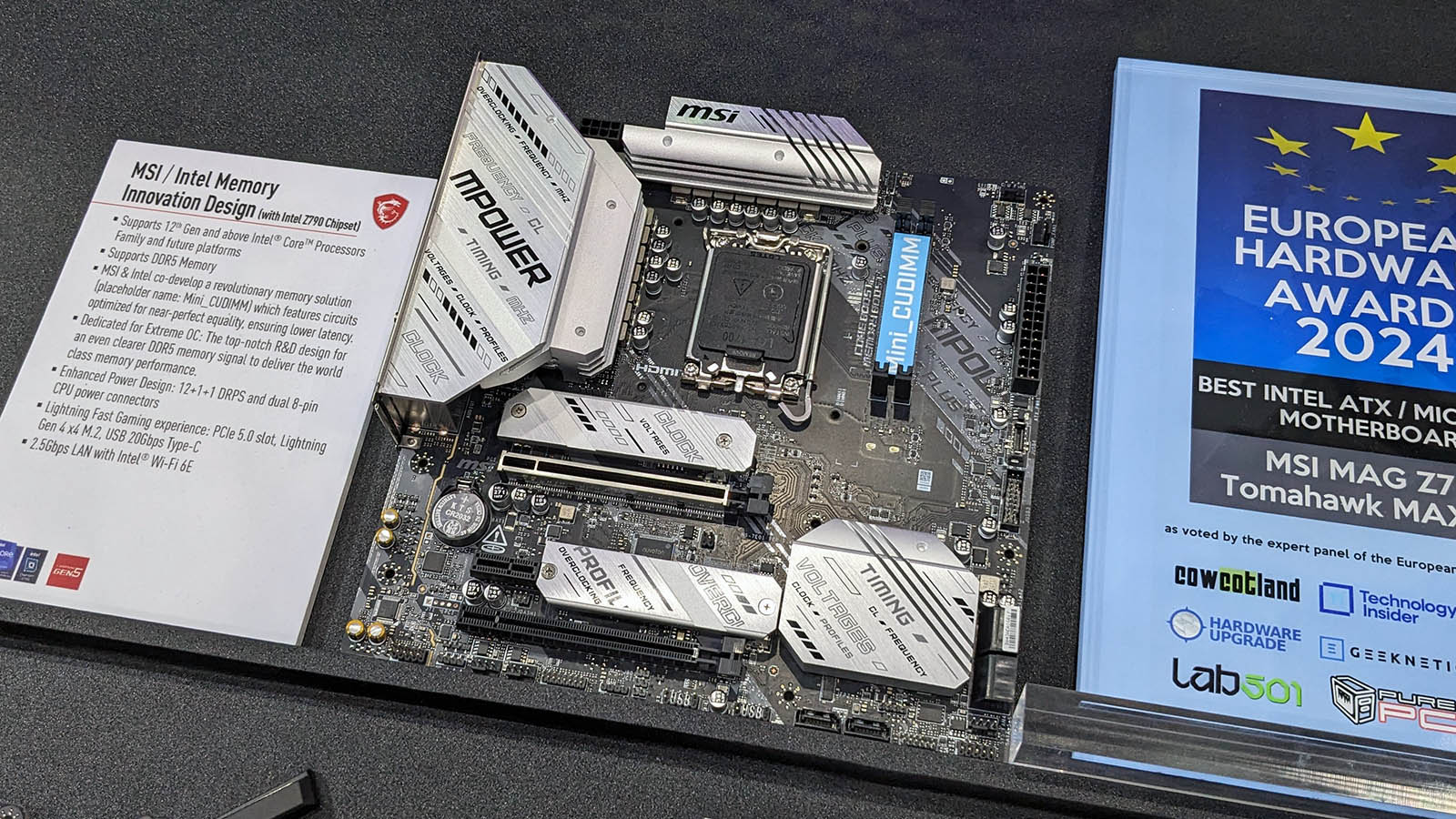
How this system will tie-in or co-exist with CAMM2 is unknown. I can't imagine there will be two distinct memory form factors. So for now, CU_DIMM raises more questions than answers. Colour me interested though! Anything that adds speed and reduces latency will benefit gamers to at least some degree, and with JEDEC extending DDR5 speeds up to 8800 MT/s, it's great to see MSI exploring opportunities to add performance to desktops. DDR5-10000 memory is certainly coming soon in one form or another.
Next generation motherboards are nearly here. Or are they?
In the weeks leading up to Computex, we were excited to get a glimpse of next generation AMD and perhaps Intel motherboards. Most vendors took a cautious approach following directions from both AMD and Intel to not reveal everything at this point.
AMD boards are likely to come first, though MSI was not allowed to provide a release timeline. When I was able to muscle my way to the front of the throng of people, a pair of X870 motherboards smiled for my camera.
The first was the Pro X870-P WiFi. The Pro-series typically sits at the lower end of MSI's motherboard range, though you wouldn't know it from looking at it. The heatsink design adds a real touch of class, while its relatively powerful VRM means this model shouldn't have any problems powering a high end Ryzen 9000-series CPU.
Add to that both GPU and M.2 Gen 5 support, USB 4, 5G LAN and WiFi 7 and these are specs you wouldn't expect from a board at the more affordable end of the spectrum.

The second X870 board was the MAG X870 Tomahawk WiFi. Apart from having a more powerful VRM, it looks quite similar in base spec to the Pro model, though it has a few flourishes such as improved M.2 heatsinks, and a superior USB complement.
MSI's MAG series is the third tier of MSI's gaming oriented range, sitting below the MPG and high-end MEG series. That would point towards the Tomahawk being an affordable mid range option. If the Pro X870-P WiFi and MAG Z870 Tomahawk have specs like these, then we should be in for a treat when MSI's high end X870 options are unveiled in the weeks and months ahead.
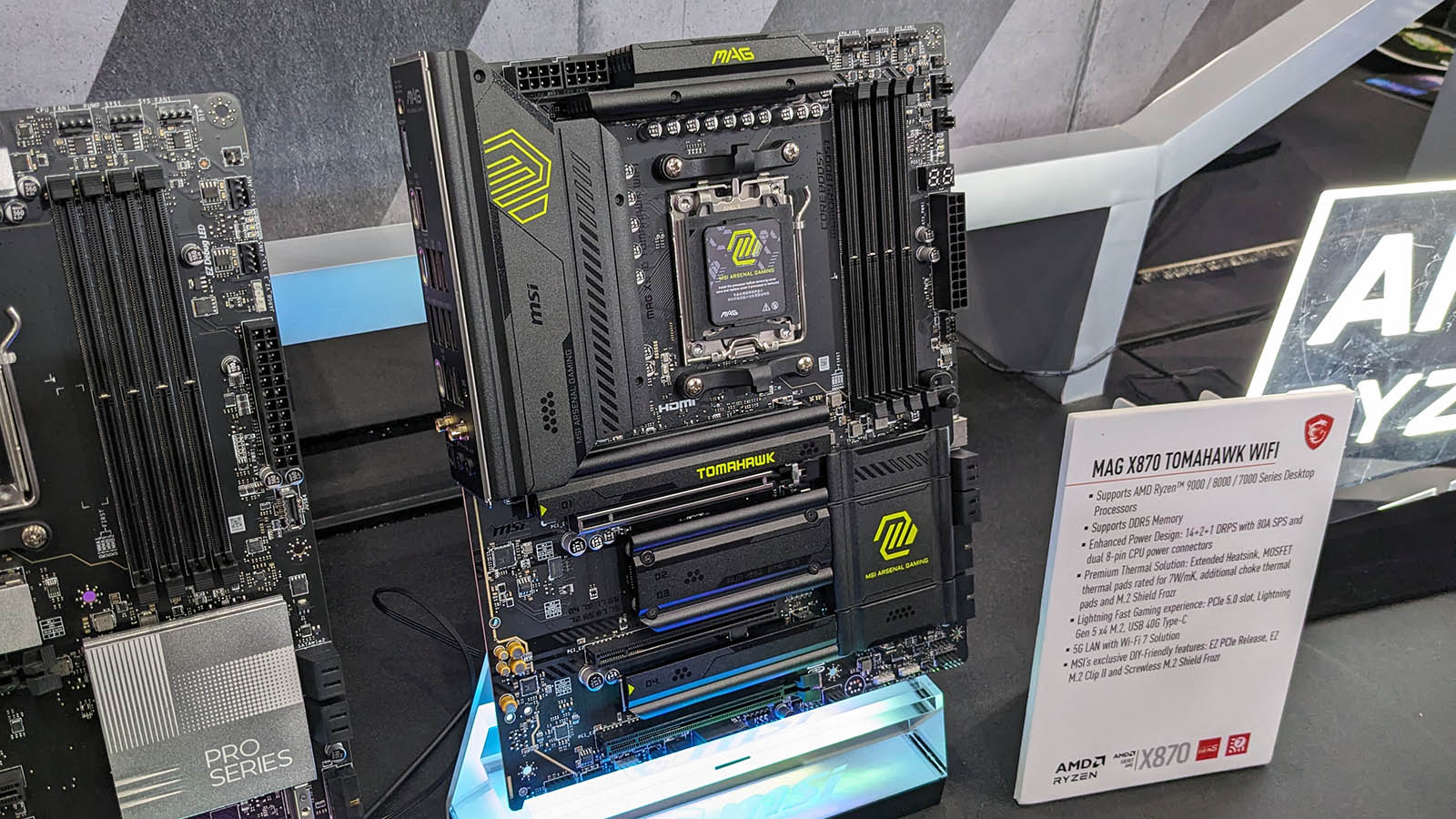
Over on the Intel side, we got a glimpse at a couple of unnamed motherboards with Arrow Lake CPU support. It's likely these boards are several months away from launch, so it's understandable that MSI wasn't able to go into a lot of detail.
I'll go out on a limb and refer to the first board as a Z890 Edge WiFi. It's an MPG board so it'll sit a little higher in MSI's product stack. We can expect Gen 5 GPU and SSD support (for the primary slot at least) , a powerful VRM, lots of USB and probably Thunderbolt 4.
MSI was keen to showcase these boards' ease of use, with PCIe release mechanisms, improved M.2 retention mechanisms, debug LEDs, and plug-in WiFi antennas. Note the 8-pin power connector at the bottom of the board. MSI knows more than we do. Perhaps those next-gen high end cards will be power guzzlers? It wouldn't be surprising.
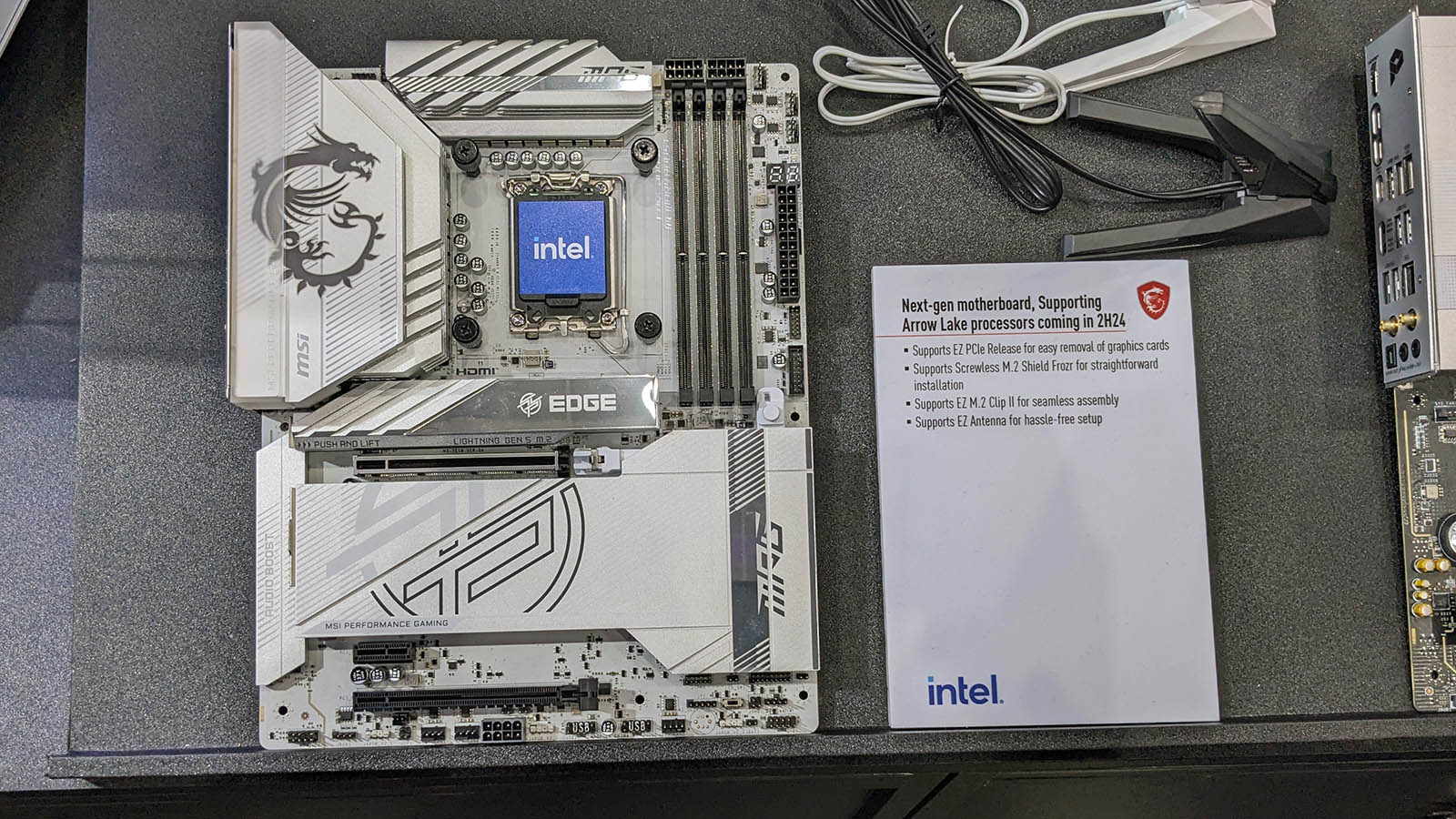
Even the Pro series board features that same connector. It's got chunky heatsinks and what looks to be at least a 12 or 14-phase VRM. Even if it has 60a stages, that would have been considered high-end just a generation or two ago. The signs point towards high TDPs for enthusiast tier Arrow Lake processors.
Note the M.2 heatsink says it supports PCIe 5.0. Assuming this is a Z890 board and not a B860 model, we can surely expect all Z890 boards to include a Gen5 x16 slot and a Gen5 x4 SSD slot.
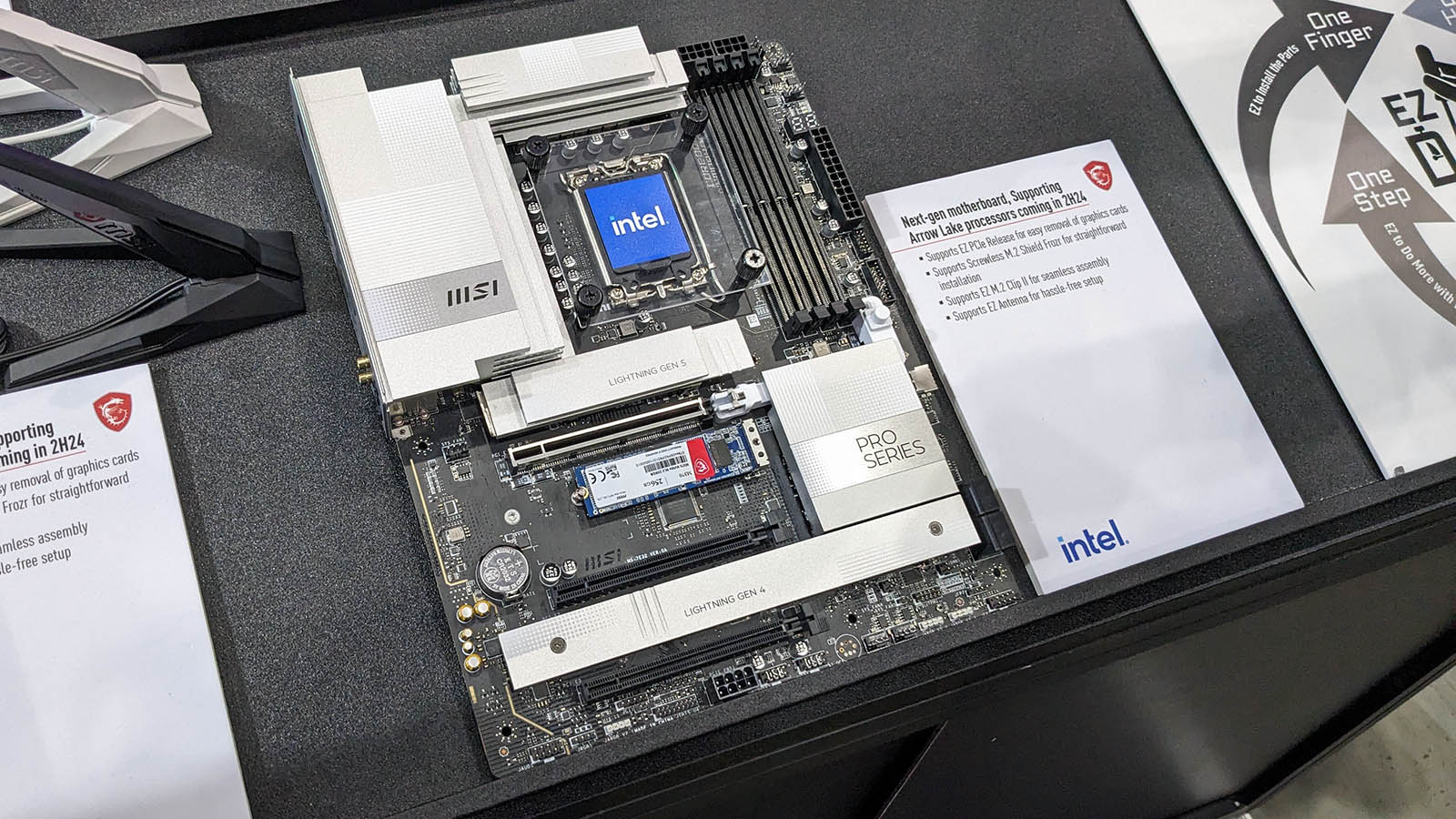
From the subtle to the extreme, MSI's graphics cards look seriously impressive
Though we did not expect so much as a teaser for any next-generation graphics card, MSI still showcased some of the most impressive graphics cards I've ever seen. Three stood out to me, all for entirely different reasons.
The first was the RTX 4080 Super Expert Fusion. I absolutely love its minimalist look, but it's what under its shroud that sets it apart. It features an integrated water cooler. It was impossible to hear it over the noise of the crowd, but if this kind of design can keep an RTX 4080 Super running cool and quiet, this could be the first of many such cards.
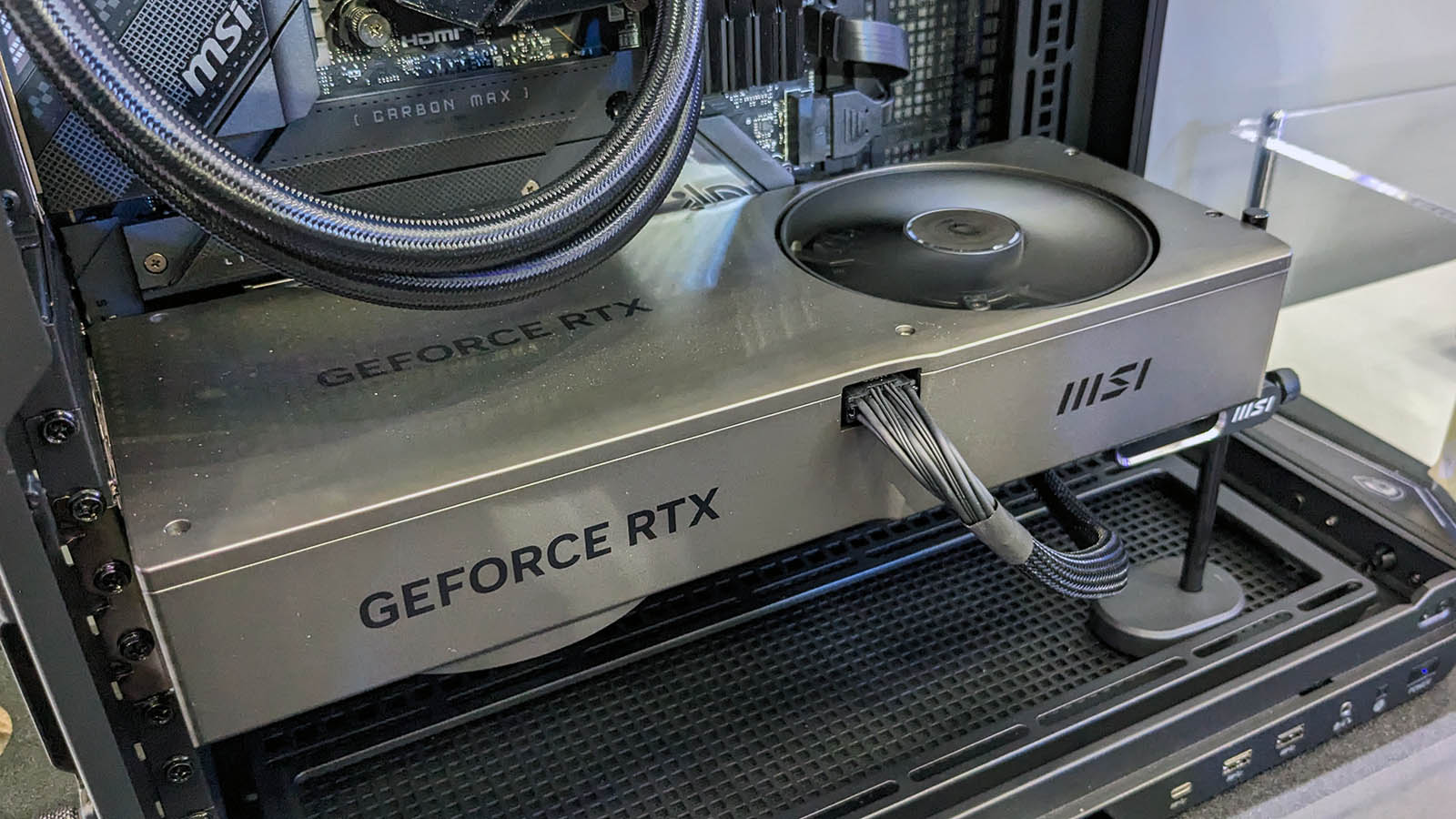
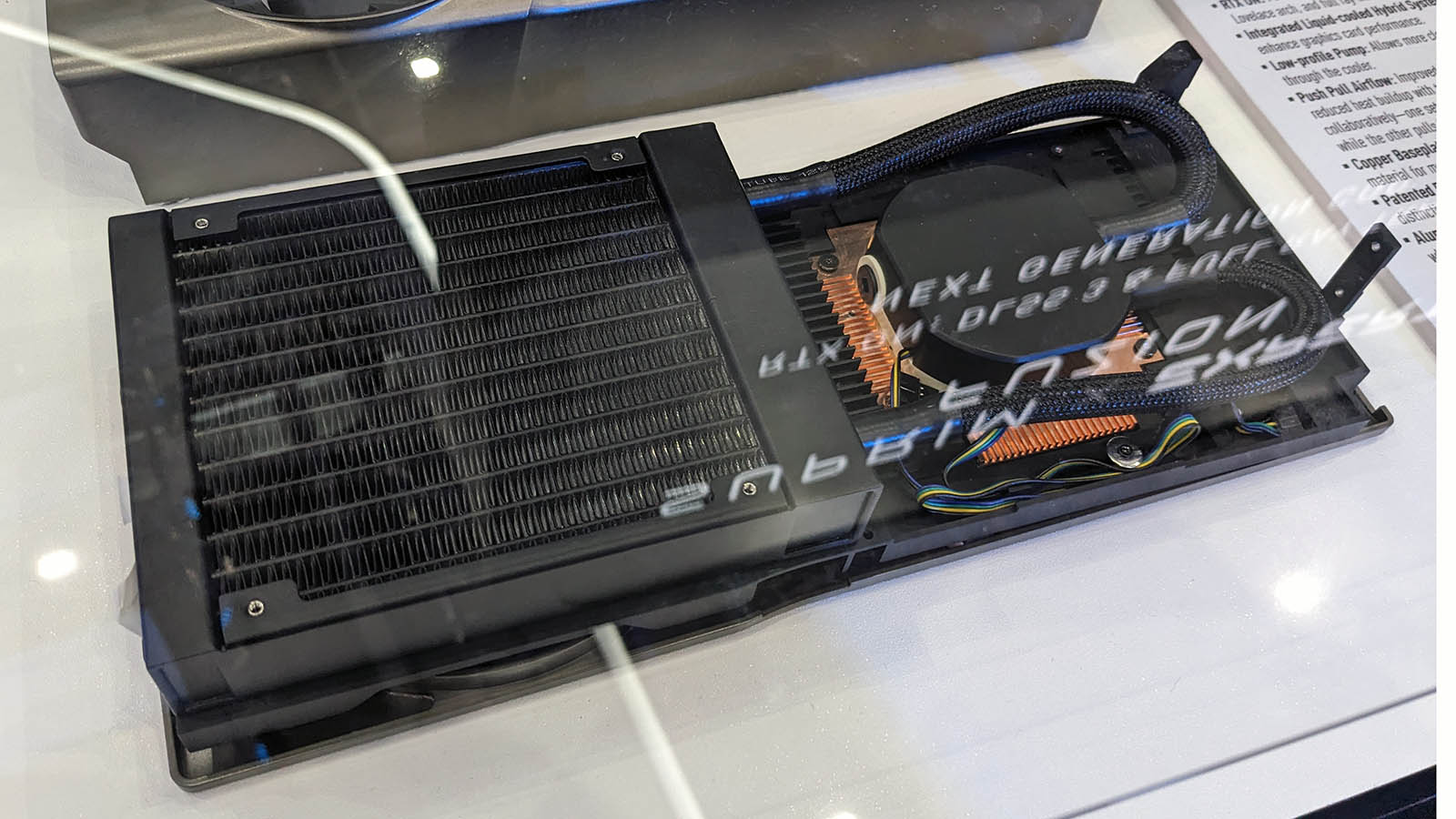
The second card that stood out was simply extreme. Forget subtlety in this case. The RTX 4090 Suprim Fuzion is an absolute monster of a card. It also includes water cooling, but on a far grander scale. Just look at it!
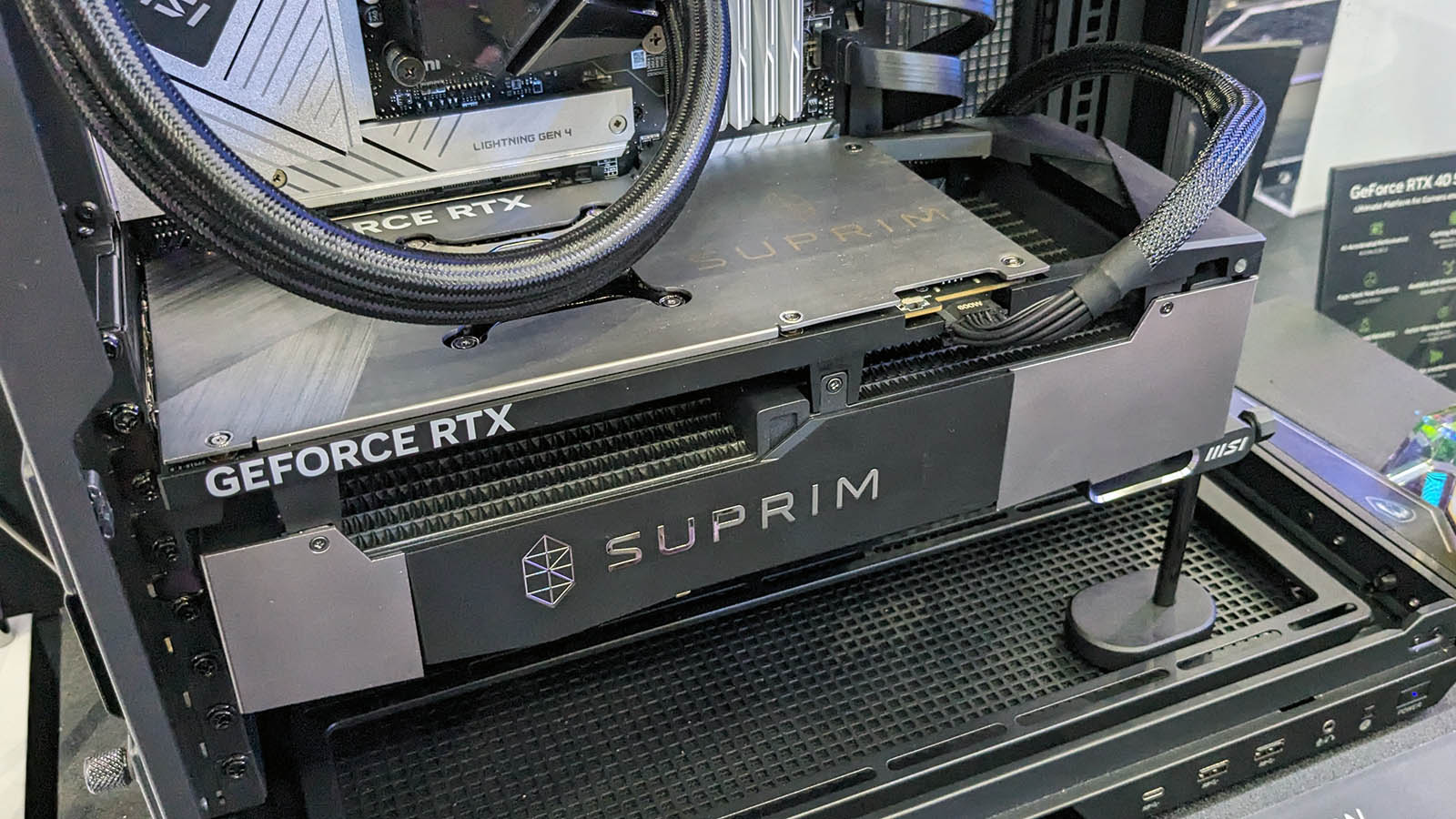
The third card that caught my eye wasn't actually one card, but a series of them. These eye-catching coolers are the result of MSI turning an AI loose. As you know, MSI's mascot is a dragon, and an AI has taken that design cue and run with it. The results are really impressive.
I particularly like the silver coloured one, as did Jensen Huang it seems, as the case housing the card featured a signature of approval from the Nvidia CEO himself.
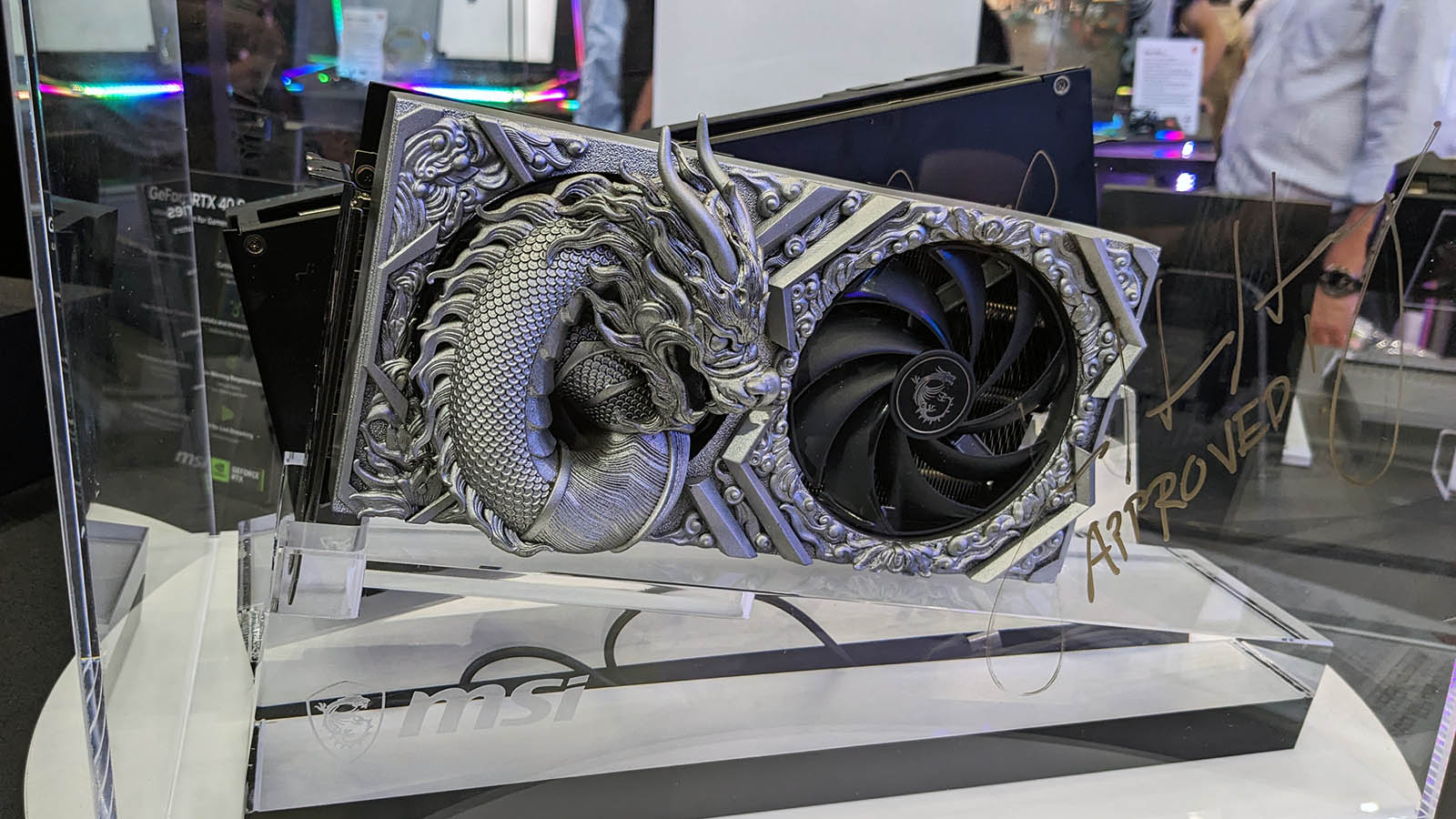
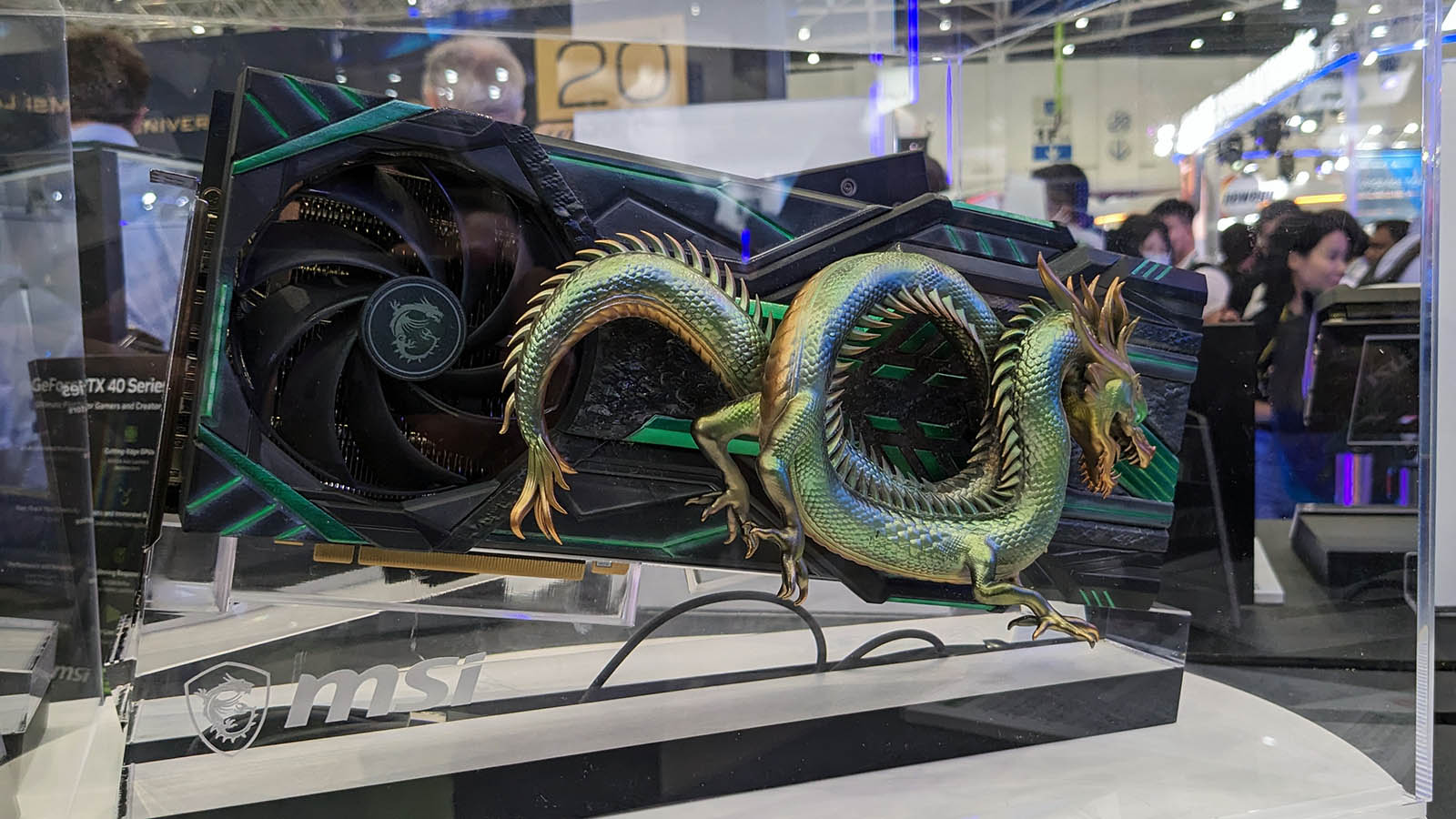
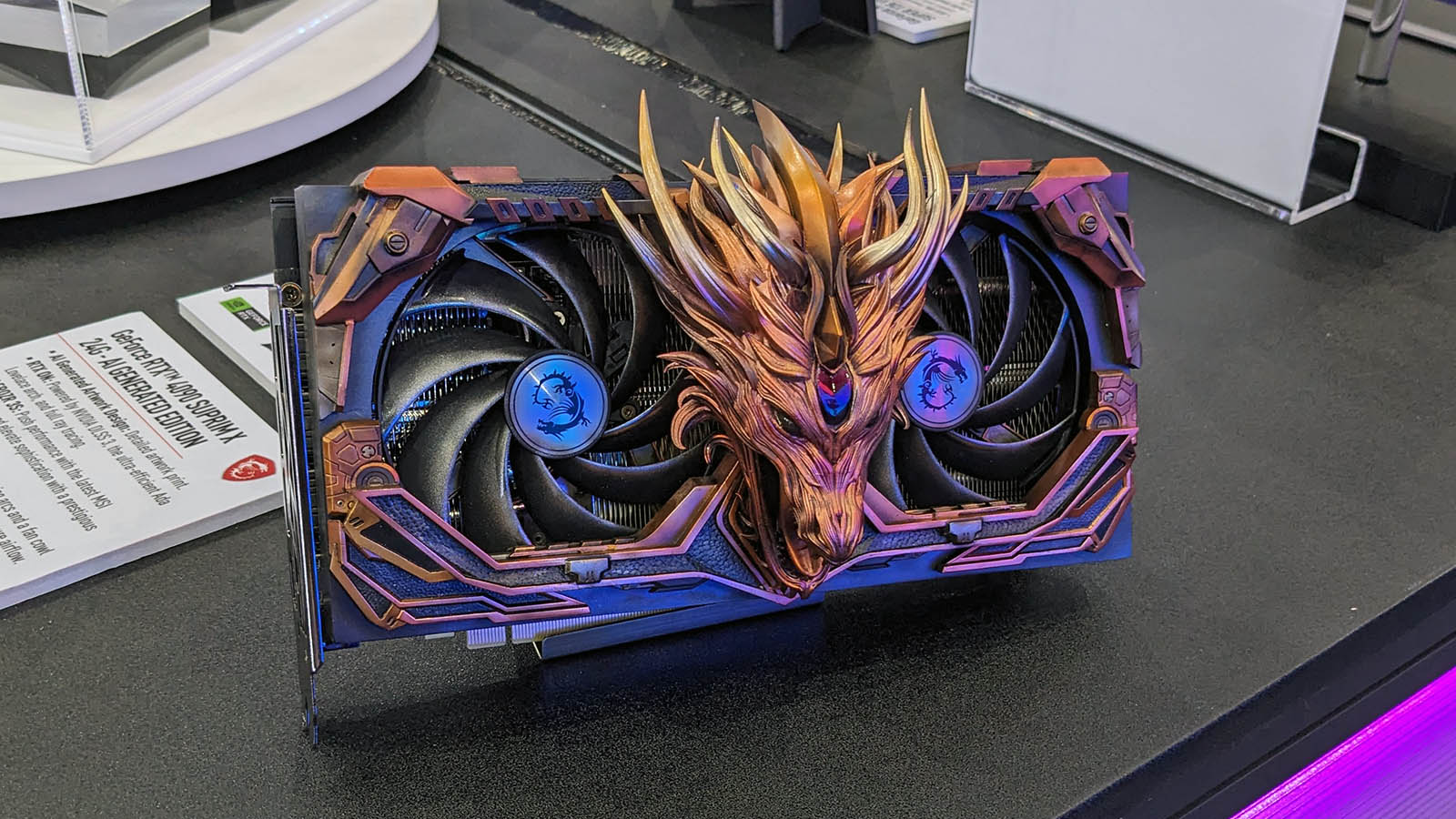
Cooling your CPU.. and SSD!
Standing out in the highly competitive SSD market takes more than just slapping a tower cooler on a Phison drive and shouting it can transfer at up to 14GB/s. A good cooler can make the difference, and MSI's new Spatium drive with what MSI calls a non-metal vapour chamber cooler looks really interesting. Look ma! No fan!
MSI says this cooler delivers up to 11 degrees Celsius cooler temperatures than a traditional aluminium heatsink. Of course, we'd need to test and compare one ourselves to know for sure, but if this claim is true, and it can run under a heavy load without throttling then it's sure to sell well. Will we ever get to the stage when we can say goodbye to tower-style heatsinks with pesky embedded fans? We hope this MSI SSD cooler is an effective solution.
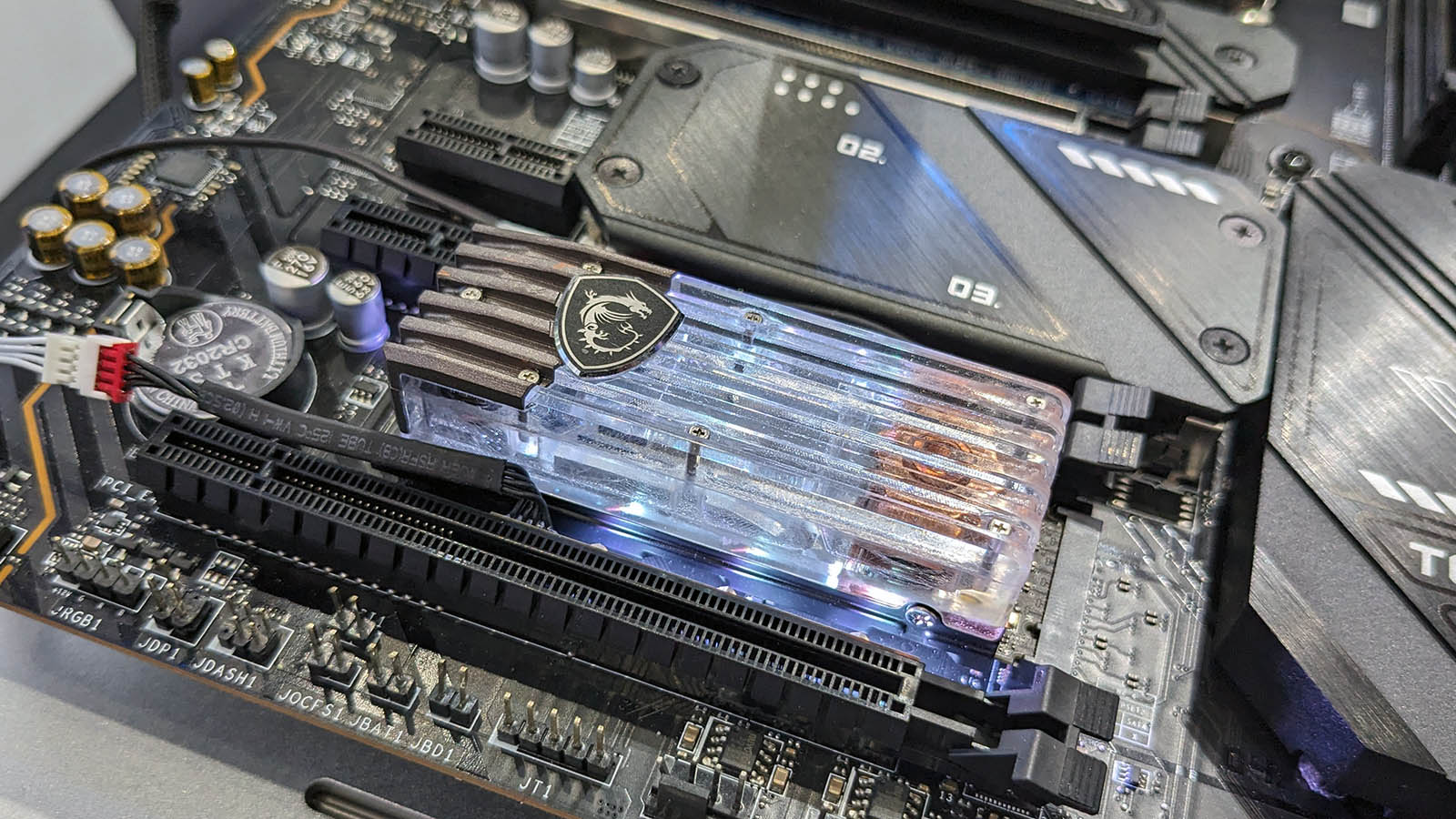
On the topic of SSDs, MSI showed off what it calls the M.2 Xpander-Aero Slider expansion card. This GPU-looking device holds a pair of 22110 SSDs. The interesting thing is that the drives are hot-swappable via the rear I/O bracket. NVMe SSDs are generally a pain in the derriere to access, so this solution looks mightily impressive to me. I wouldn't be surprised to see this device bundled with MSI's high end Ace or Godlike motherboards in the future.
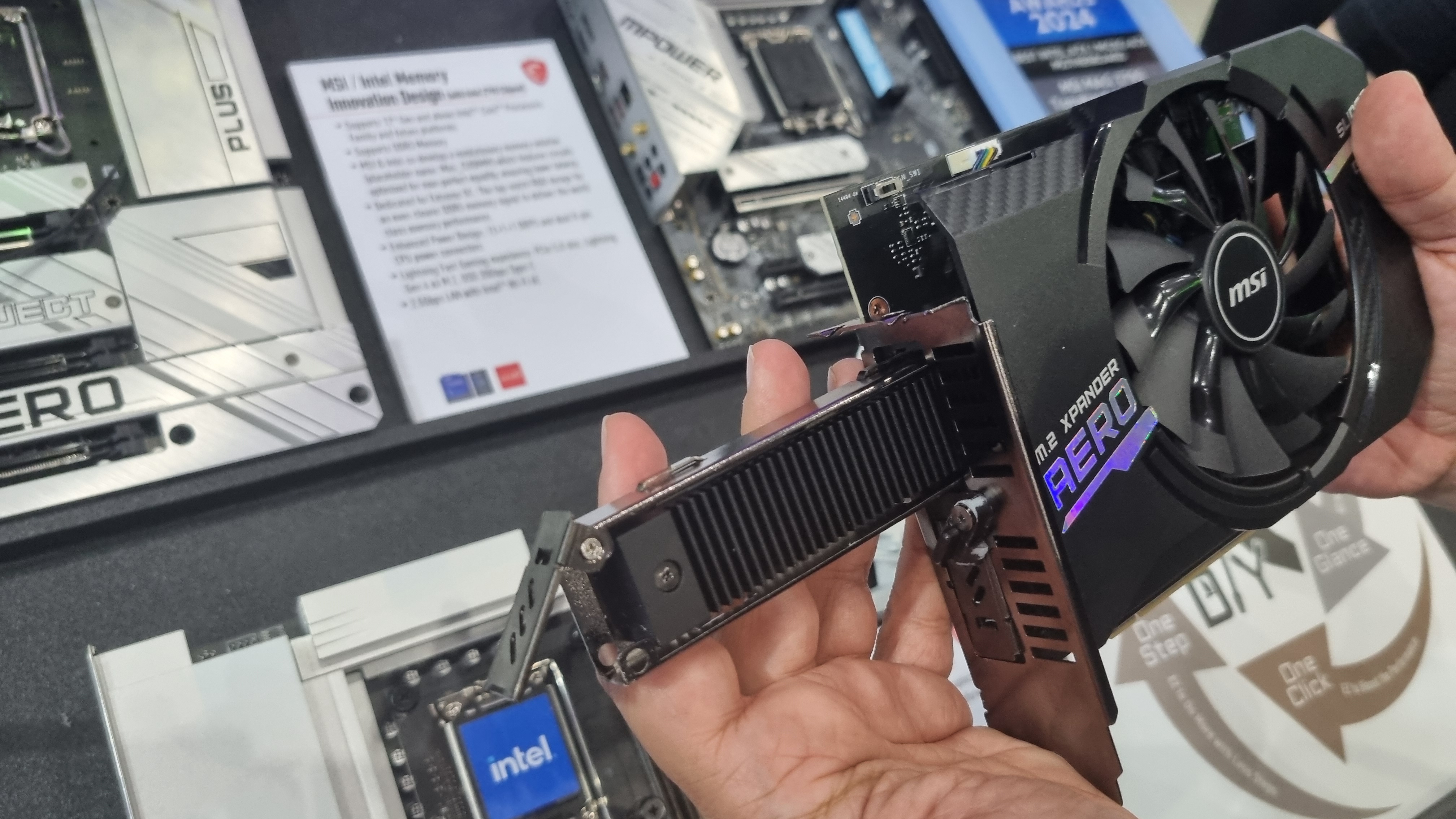
Cooling an SSD is one thing, but cooling a CPU is another. The AIO market can seem a bit 'me-too'. The CoreLiquid P-series range aims to differentiate itself from the pack by including an adjustable 4.3-in IPS screen, a unified AMD/Intel mounting system and a combined RGB and fan cable connection.
MSI says these coolers have been built to cope with the hotspot demands of next generation processors. We'll see how the P-series does in testing, but it ticks a lot of the boxes, though it's certainly not going to be a cheap solution with a screen like that.
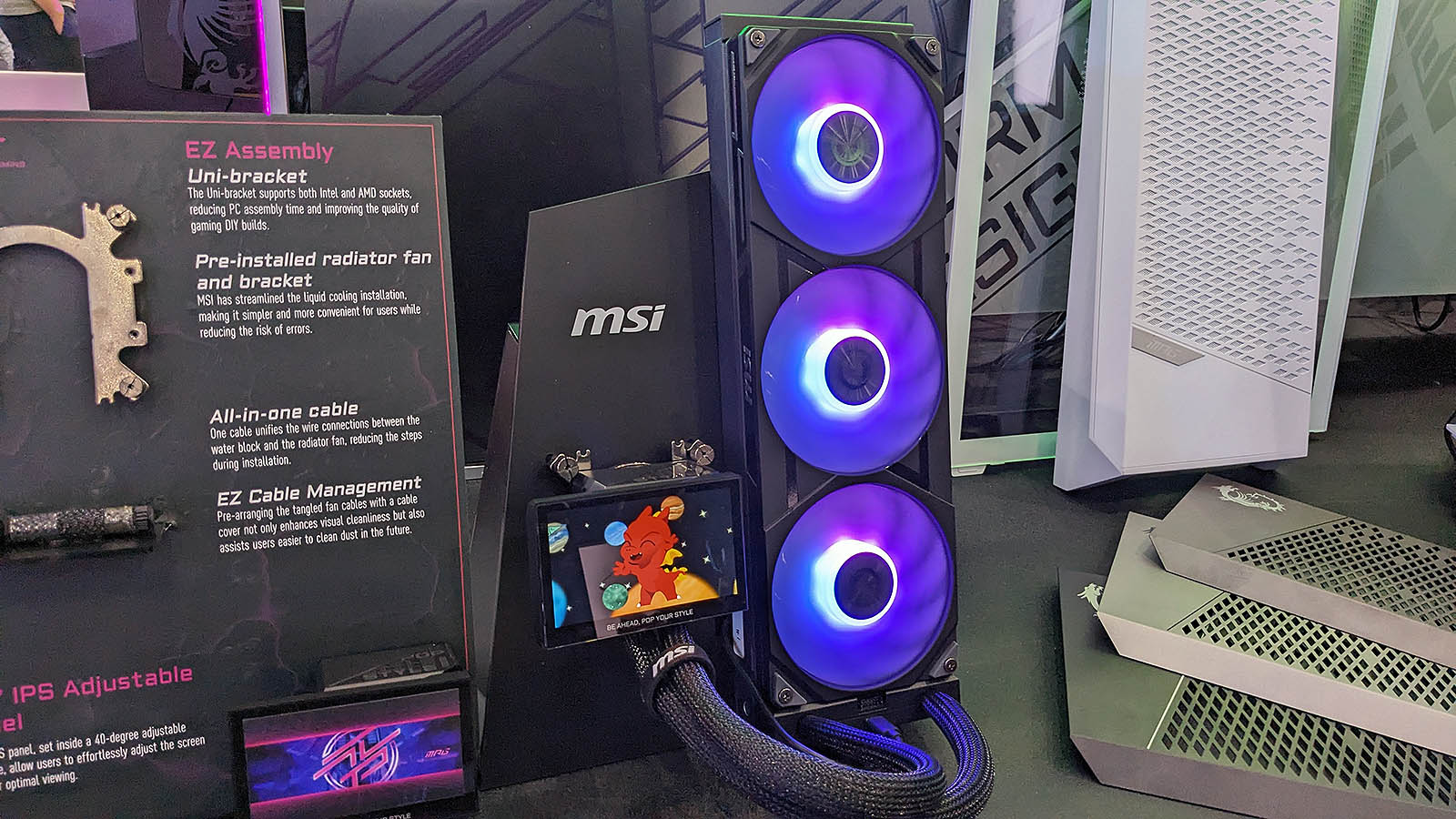
An affordable OLED monitor
I'd like to finish off by highlighting what could be a very interesting QD-OLED monitor. The MAG 271QPX E2 comes with a 240Hz refresh rate. It's a 27-inch 1440p model. There's nothing revolutionary there, but the key is its price. MSI says it will come in at $600 USD which is sure to impress a lot of gamers. Hopefully it'll land in Australia at under $1,000.
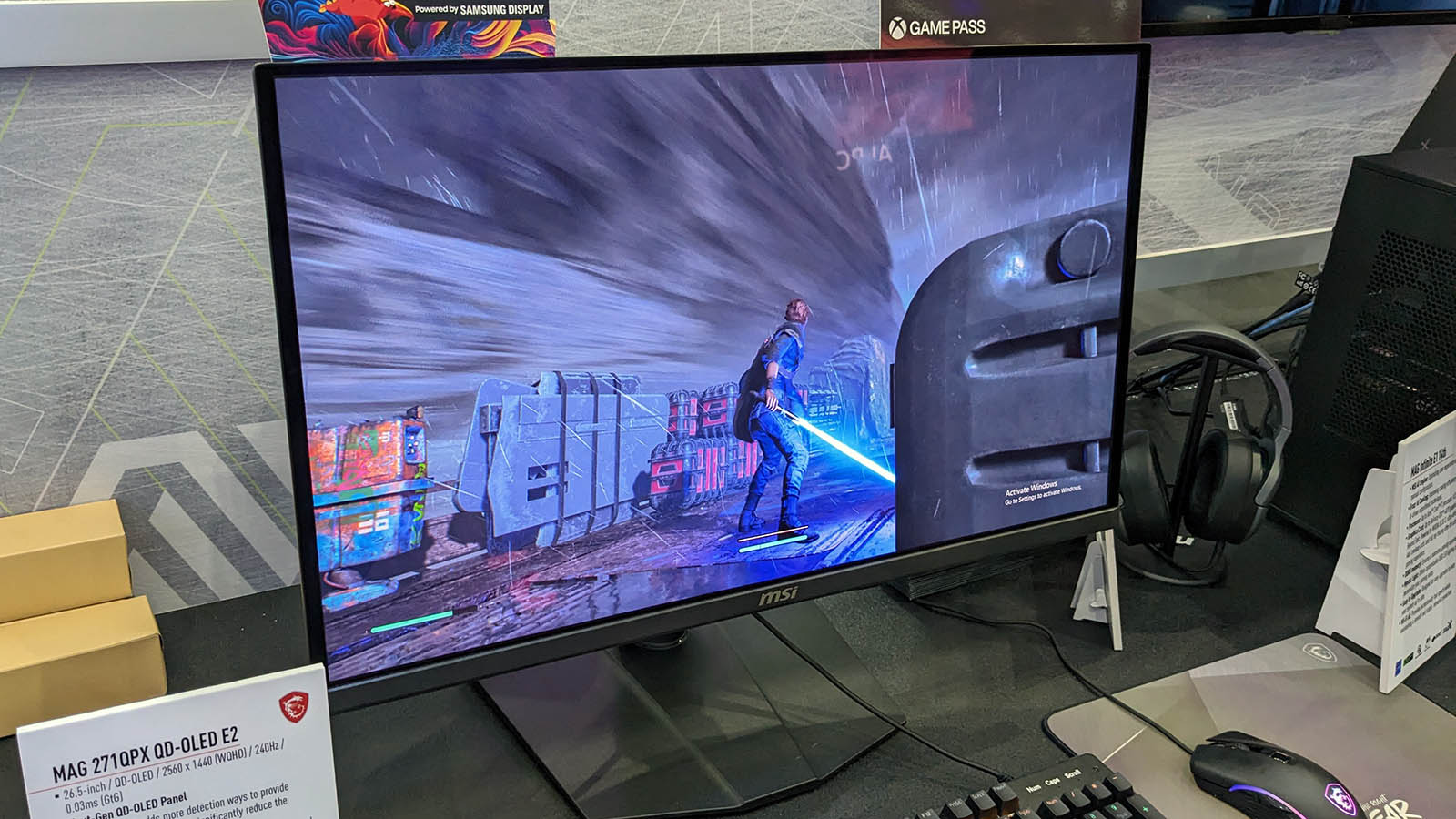
I could talk more! MSI showed off some interesting fans, a lovely Modern-series case with wooden accents and the MEG Vision X AI case with a touch screen that covers the entire front panel. That one is sure to be expensive.
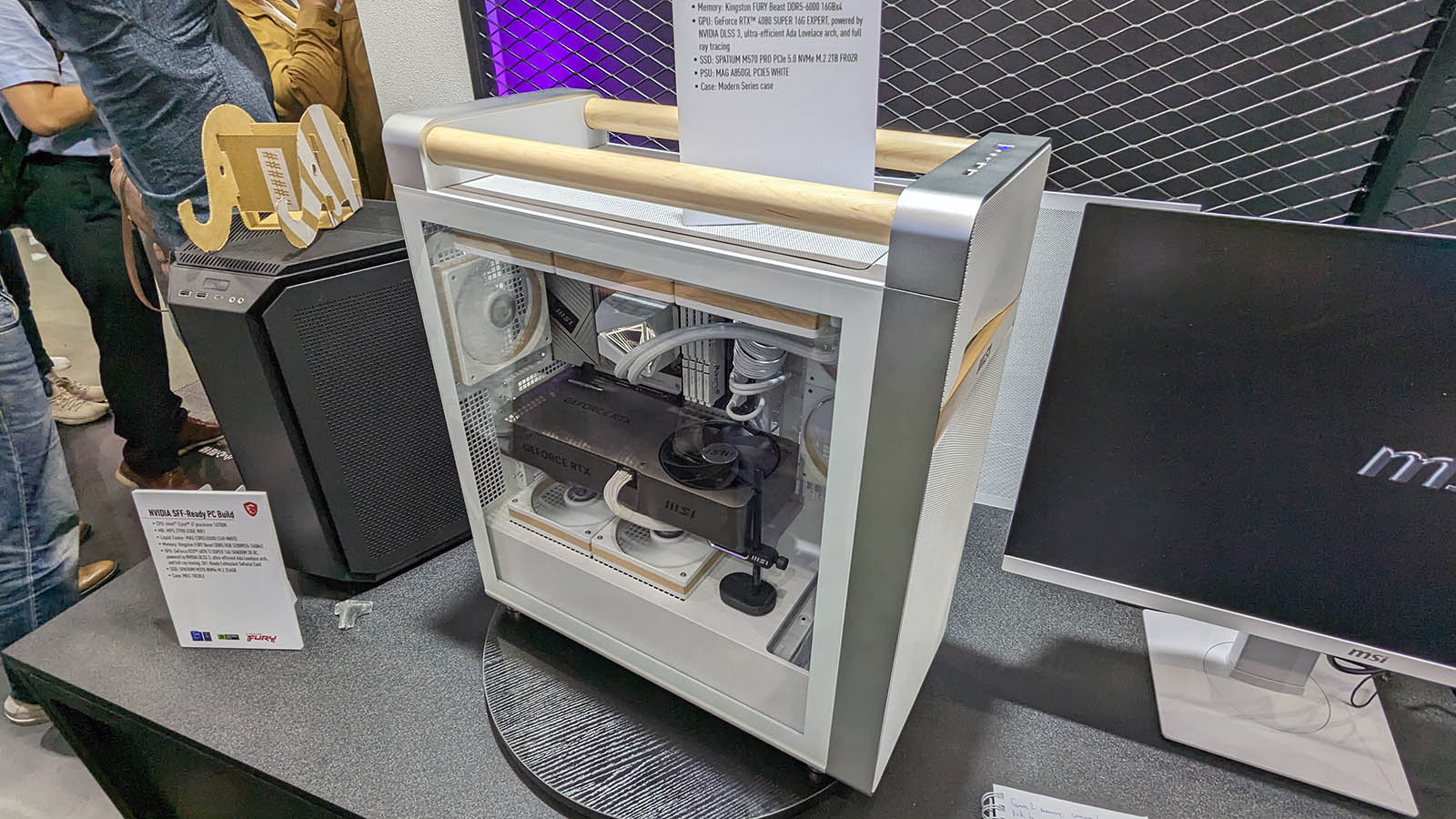
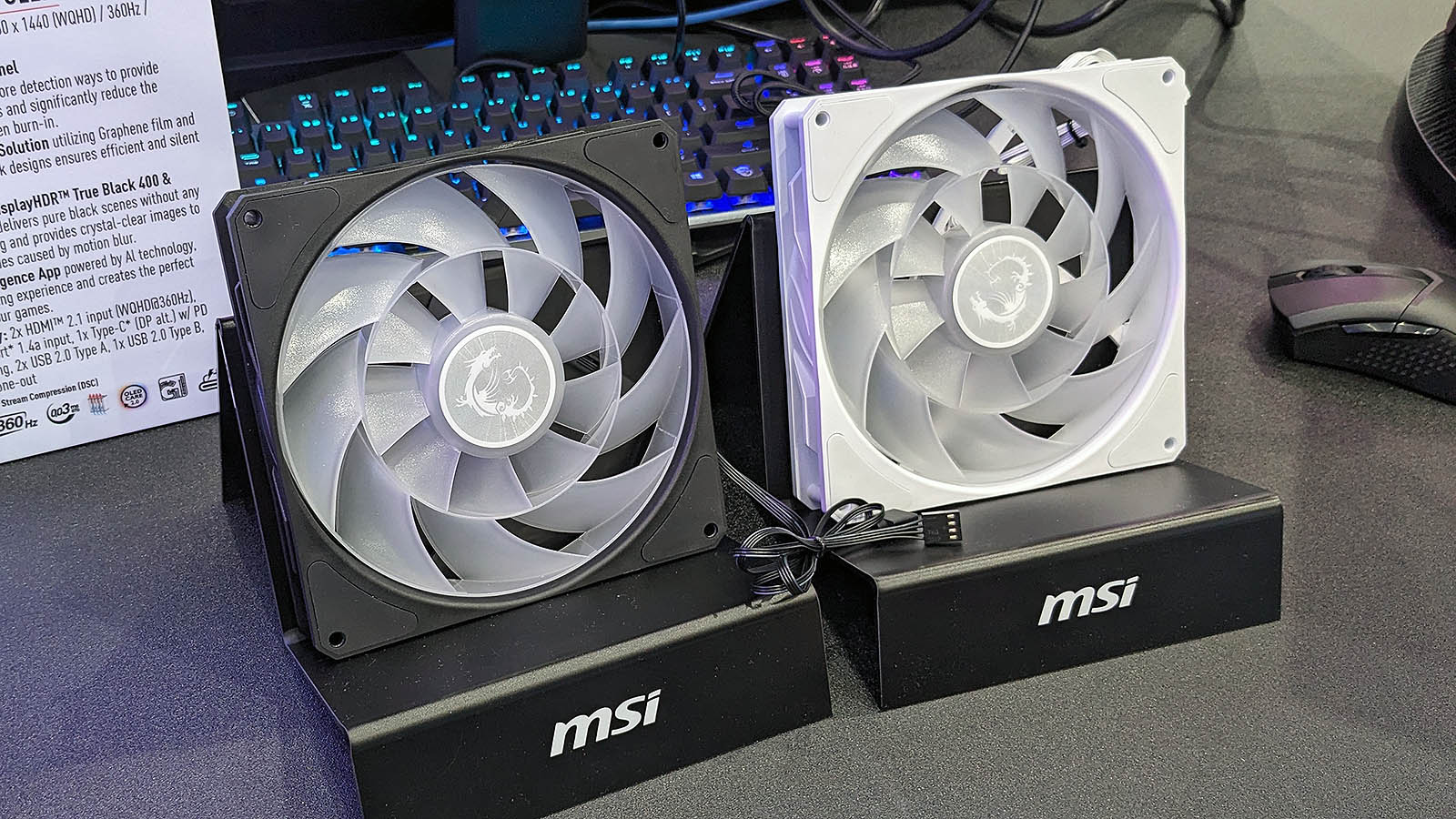
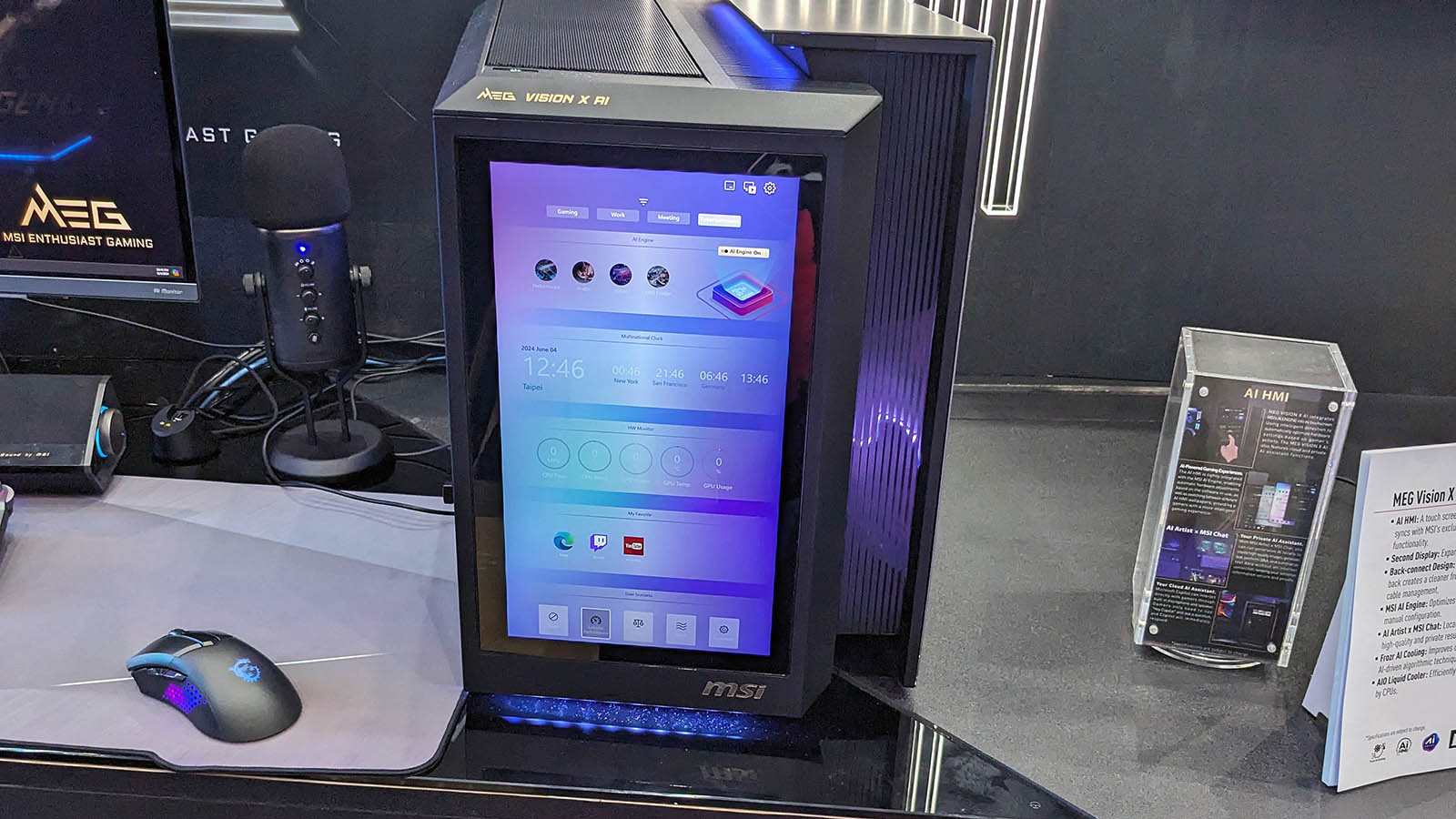
It looks like MSI is going to have a very busy end to 2024, and for sure there will be new graphics cards, motherboards and monitors to come.
Did I mention that Computex was absolutely packed this year?
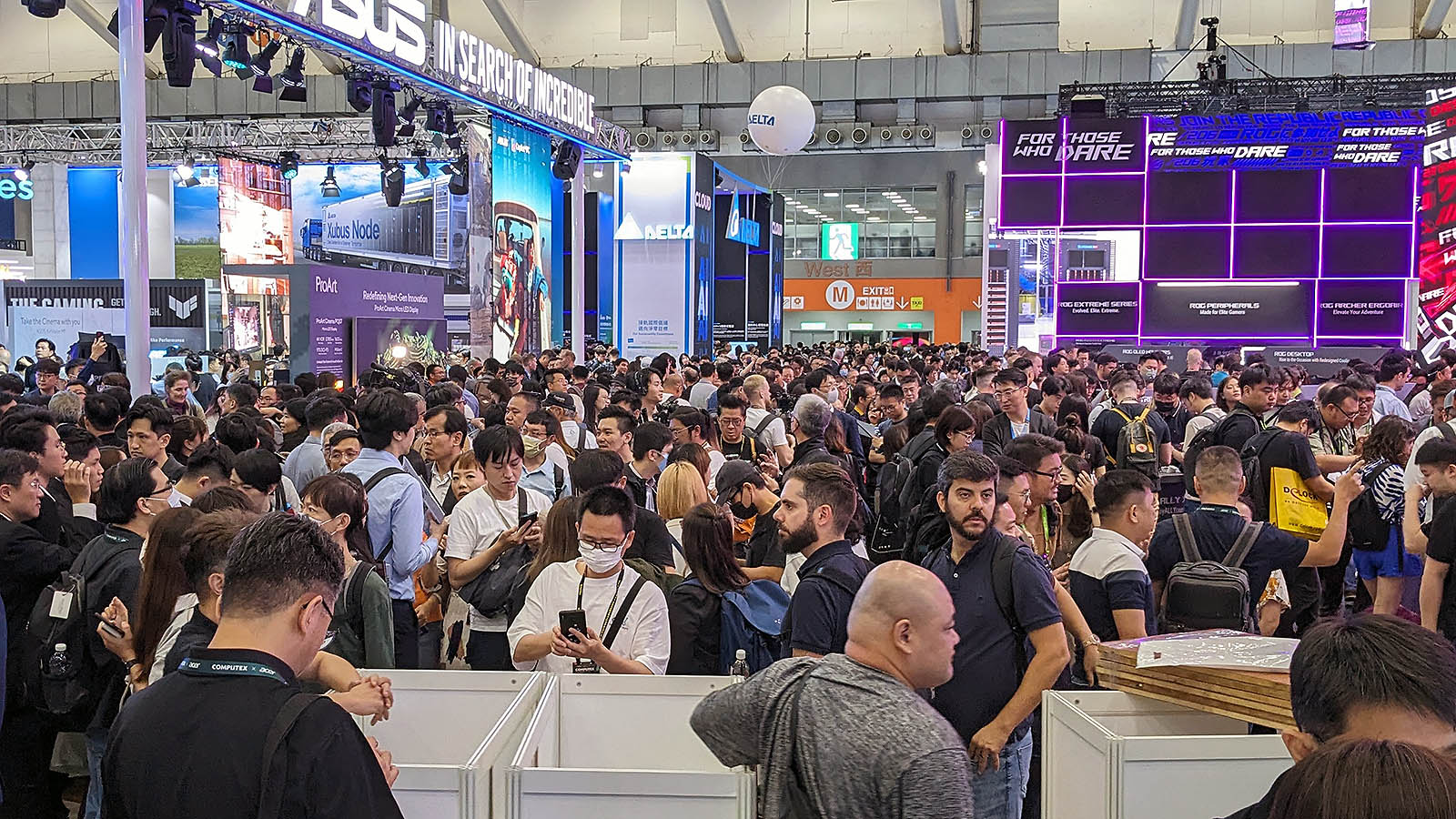

Chris' gaming experiences go back to the mid-nineties when he conned his parents into buying an 'educational PC' that was conveniently overpowered to play Doom and Tie Fighter. He developed a love of extreme overclocking that destroyed his savings despite the cheaper hardware on offer via his job at a PC store. To afford more LN2 he began moonlighting as a reviewer for VR-Zone before jumping the fence to work for MSI Australia. Since then, he's gone back to journalism, enthusiastically reviewing the latest and greatest components for PC & Tech Authority, PC Powerplay and currently Australian Personal Computer magazine and PC Gamer. Chris still puts far too many hours into Borderlands 3, always striving to become a more efficient killer.

